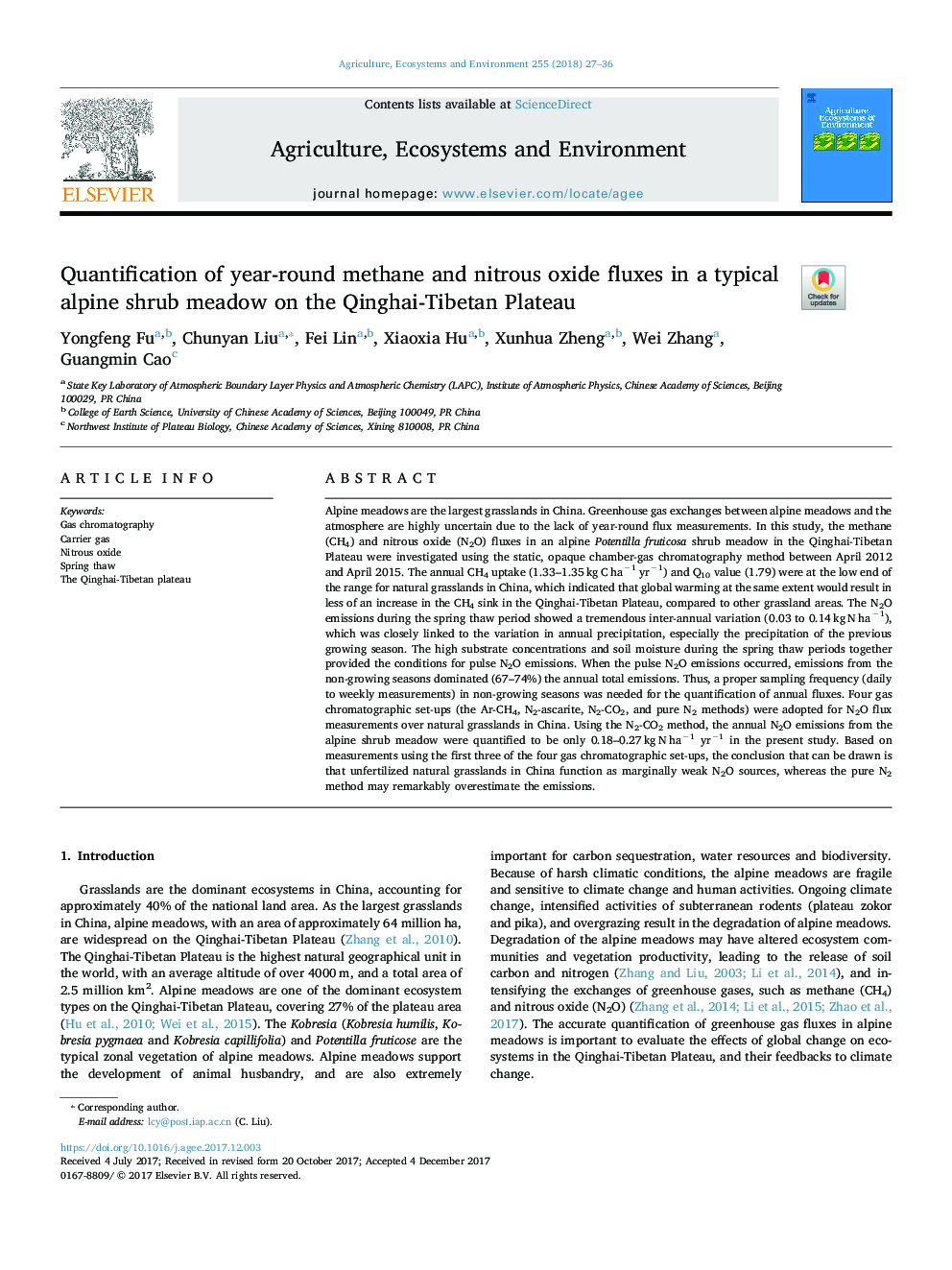| Article ID | Journal | Published Year | Pages | File Type |
|---|---|---|---|---|
| 8487183 | Agriculture, Ecosystems & Environment | 2018 | 10 Pages |
Abstract
Alpine meadows are the largest grasslands in China. Greenhouse gas exchanges between alpine meadows and the atmosphere are highly uncertain due to the lack of year-round flux measurements. In this study, the methane (CH4) and nitrous oxide (N2O) fluxes in an alpine Potentilla fruticosa shrub meadow in the Qinghai-Tibetan Plateau were investigated using the static, opaque chamber-gas chromatography method between April 2012 and April 2015. The annual CH4 uptake (1.33-1.35â¯kgâ¯Câ¯haâ1 yrâ1) and Q10 value (1.79) were at the low end of the range for natural grasslands in China, which indicated that global warming at the same extent would result in less of an increase in the CH4 sink in the Qinghai-Tibetan Plateau, compared to other grassland areas. The N2O emissions during the spring thaw period showed a tremendous inter-annual variation (0.03 to 0.14â¯kgâ¯Nâ¯haâ1), which was closely linked to the variation in annual precipitation, especially the precipitation of the previous growing season. The high substrate concentrations and soil moisture during the spring thaw periods together provided the conditions for pulse N2O emissions. When the pulse N2O emissions occurred, emissions from the non-growing seasons dominated (67-74%) the annual total emissions. Thus, a proper sampling frequency (daily to weekly measurements) in non-growing seasons was needed for the quantification of annual fluxes. Four gas chromatographic set-ups (the Ar-CH4, N2-ascarite, N2-CO2, and pure N2 methods) were adopted for N2O flux measurements over natural grasslands in China. Using the N2-CO2 method, the annual N2O emissions from the alpine shrub meadow were quantified to be only 0.18-0.27â¯kgâ¯Nâ¯haâ1 yrâ1 in the present study. Based on measurements using the first three of the four gas chromatographic set-ups, the conclusion that can be drawn is that unfertilized natural grasslands in China function as marginally weak N2O sources, whereas the pure N2 method may remarkably overestimate the emissions.
Related Topics
Life Sciences
Agricultural and Biological Sciences
Agronomy and Crop Science
Authors
Yongfeng Fu, Chunyan Liu, Fei Lin, Xiaoxia Hu, Xunhua Zheng, Wei Zhang, Guangmin Cao,
